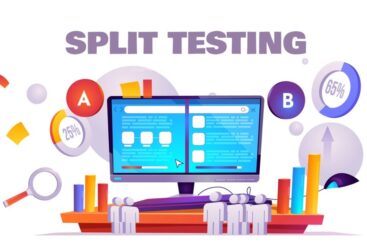In the digital age, where information flows ceaselessly through the vast channels of the internet, the role of storytelling in content marketing has emerged as a potent force. The ability to craft a compelling narrative is more than an art; it’s a fundamental skill for content creators and businesses looking to engage, captivate, and connect with their audience. In this comprehensive exploration, we will delve into the profound significance of storytelling in content marketing. We’ll understand why it matters, dissect its essential elements, and learn how to wield this narrative magic to establish deep, meaningful bonds with your audience.
Why Storytelling Matters in Content Marketing
To appreciate the profound impact of storytelling in content marketing, it’s vital to first understand why it holds such significance.
1. Emotional Resonance
Stories have an unparalleled ability to evoke emotions. Whether it’s joy, empathy, surprise, or curiosity, a well-told story has the power to make your audience feel. When people connect with a story on an emotional level, it transforms their passive consumption of content into a profoundly memorable and engaging experience. Emotions drive decisions, behaviors, and brand loyalty, making this aspect of storytelling invaluable in content marketing.
2. Relatability
The heart of a story often revolves around relatable characters and situations. Whether your narrative is fictional or based on real experiences, it usually mirrors the challenges and aspirations of your audience. This relatability fosters a profound sense of connection between the audience and the storyteller. When your audience can see themselves or their own experiences within your story, it engenders trust and a stronger affinity for your brand.
3. Simplicity and Clarity
Complex ideas and information can be challenging to convey effectively. Stories excel at simplifying intricate concepts by embedding them within a narrative structure. By doing so, stories make content more accessible and relatable. This quality is particularly useful when communicating complex or technical details to a diverse audience.
4. Differentiation
In the vast landscape of content, storytelling can be a powerful tool for differentiation. By using narratives to communicate your message, you infuse your brand with a unique voice and perspective. A well-crafted story can set you apart from the competition, enabling your brand to stand out in a crowded digital marketplace.
5. Retention and Recall
People remember stories much better than raw data or facts. The human brain is wired to absorb and retain information delivered in the form of a story. When you want your message to stick with your audience, wrapping it in a narrative is one of the most effective methods to ensure it lingers in their minds.
The Elements of Compelling Storytelling in Content Marketing
Effective storytelling is more than just a captivating plot. It involves several key elements that must be skillfully integrated into your content:
1. Character Development
Compelling stories often feature relatable and well-developed characters. These characters can be fictional, based on real individuals, or even represent your brand. By providing depth to your characters, fleshing out their personalities, challenges, and goals, you give your audience someone to root for, empathize with, or aspire to become.
2. Conflict and Resolution
Every engaging story has a conflict at its core. This conflict serves as the driving force of the narrative, creating tension, suspense, and a captivating storyline. The resolution of this conflict offers a sense of closure and typically imparts a valuable message or lesson to the audience.
3. Authenticity
Authenticity is a cornerstone of effective storytelling. Audiences can easily detect inauthentic or contrived narratives. Your story should mirror your brand’s values and identity, providing an honest and genuine reflection of who you are.
4. Visual and Emotional Details
To create a profound impact, engage your audience’s senses and emotions through vivid and compelling details. Whether you’re describing the setting, a character’s expressions, or the atmosphere of a scene, painting a rich visual and emotional picture enhances the impact of your story.
5. Clear Message
While storytelling can be creative and open to interpretation, it’s essential that your narrative conveys a clear message or takeaway. What do you want your audience to learn or feel after experiencing your story? Make sure this message is evident within the narrative.
How to Implement Storytelling in Content Marketing
Storytelling can be seamlessly integrated into various facets of content marketing, allowing you to connect with your audience on a deeper level. Here’s how you can incorporate storytelling into your content:
1. Blog Posts and Articles
Craft your blog posts and articles using a storytelling structure. Begin with a captivating hook that draws readers in, present the main narrative or message, and conclude with a resolution or a compelling call to action.
2. Social Media
Utilize social media platforms to tell micro-stories. Whether you’re sharing customer success stories, behind-the-scenes glimpses, or inspiring anecdotes, use the brevity of these platforms to engage your audience.
3. Video Content
Video content is a powerful medium for storytelling. Create videos that narrate stories related to your brand, products, or customer experiences. Consider incorporating testimonials, case studies, or brand origin stories in video format.
4. Email Marketing
Engage your email subscribers through storytelling. Your email campaigns can unfold a narrative over a series of messages, creating anticipation and curiosity as your audience awaits the next installment of your story.
5. About Us Page
Your “About Us” page is the perfect place for storytelling. Share the story of your brand’s origins, mission, and values. Make it personal and relatable to create a profound connection with your audience.
6. Case Studies
Case studies are essentially storytelling with a purpose. Use real-world examples to showcase how your product or service solved a problem for a customer. A compelling case study can double as an engaging story that demonstrates the real-world value of your offerings.
Real-Life Examples of Effective Brand Storytelling
To appreciate the true potential of storytelling, we can turn to brands that have mastered the art:
1. Nike
Nike’s “Just Do It” campaign is an exemplary instance of compelling storytelling. The brand weaves stories of athletes who have overcome seemingly insurmountable obstacles to achieve their goals. These narratives inspire and resonate with their audience, fostering determination, motivation, and a sense of personal growth.
2. Apple
Apple’s product launches are masterful storytelling events. The brand creates anticipation and excitement by weaving narratives around their products. They emphasize how these products will transform the lives of their users, engaging their audience on both an emotional and practical level.
3. Airbnb
Airbnb’s brand storytelling revolves around the idea of creating unique, authentic experiences. Their stories narrate the adventures of travelers who explore the world through their platform, emphasizing the rich tapestry of experiences that their service offers. These stories appeal to the universal desire for adventure and exploration, connecting with their audience on a profound level.
Challenges of Storytelling in Content Marketing
While storytelling offers numerous advantages, it also comes with a set of challenges that must be navigated:
1. Finding the Right Story
Identifying the most relevant and engaging story for your audience can be a daunting task. Not every story will resonate equally, and selecting the right one requires a deep understanding of your target audience.
2. Consistency
Maintaining a consistent storytelling style and voice across different content types and platforms can be challenging. It’s essential to ensure that your brand’s story aligns with your values, messaging, and the expectations of your audience.
3. Overcomplication
Sometimes, brands may overcomplicate their storytelling efforts, leading to confusion or detachment from the audience. Simplicity often yields more potent results, as an overly complex narrative can alienate your audience.
Conclusion
Storytelling is a potent tool in content marketing, enabling brands to connect with their audience on a deeper, more meaningful level. Through emotional resonance, relatability, authenticity, and a clear message, storytelling forges lasting connections that foster trust and loyalty. To harness the power of storytelling effectively, incorporate the essential elements of character development, conflict and resolution, authenticity, visual and emotional details, and a clear message into your content. By using storytelling across various content marketing channels, you can engage your audience and stand out in the competitive digital landscape. Remember, it’s not just what you say; it’s how you say it. Harness the magic of storytelling to create a profound bond between your brand and your audience, and watch your content marketing efforts flourish.










